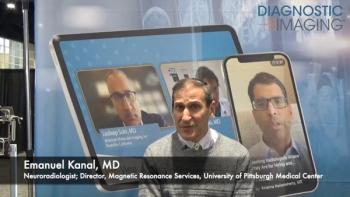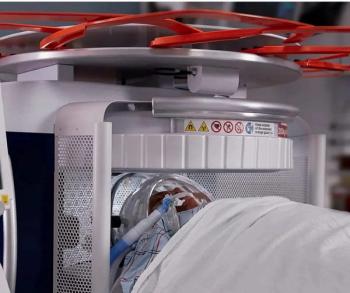
Carotid artery stenting in elderly offers safe option
Carotid artery stenting can be performed safely in patients 80 years or older, according to study results released at the annual American Society of Interventional and Therapeutic Neuroradiology meeting July 27 in Puerto Rico.
Carotid artery stenting can be performed safely in patients 80 years or older, according to study results released at the annual American Society of Interventional and Therapeutic Neuroradiology meeting July 27 in Puerto Rico.
Presented by study leaders Drs. Italo Linfante and Ajay Wakhloo, interventional neuroradiologists at the University of Massachusetts, the study outcomes lend yet one more voice to the ongoing debate regarding the effectiveness and efficacy of minimally invasive carotid artery stenting in the elderly population.
"The study was initiated on the premise that elderly patients with blockage in the internal carotid artery often have no treatment options," Linfante said.
Intravenous tPA, the traditional treatment for stroke, is not effective on carotid blockages, and surgical intervention is considered highly risky for this age group.
Treatment for blocked carotids in the 80+ population takes on added importance, given the fact that stroke is the second cause of death in this group. In addition, 30% to 60% of strokes in this age group are secondary to blockage in the carotid artery.
The single-center study conducted from 2001 to 2004 included 178 patients, 24 of them 80 years or older. The sample included patients labeled moderately to severely ill, with 70.8% being symptomatic (having suffered a ministroke, stroke, or visual symptoms) and half presenting with severe coronary artery disease.
All patients underwent carotid artery stenting, and distal protection devices were used when possible. A neurologist evaluated the patients preprocedure and 24 hours, 30 days, six months, and one year postprocedure.
Study outcomes revealed a procedural success rate of 100% with a remaining narrowing of the artery of less than 20%. Thirty-day follow-up revealed one heart attack, one ministroke, and one blockage in the femoral artery in the symptomatic group. There were no deaths at 30-day, six-month, or one-year follow-up and no reblockage at one-year follow-up and evaluation.
Available data on stenting in patients over 80 years old are controversial. The Carotid Revascularization Endarterectomy versus Stenting Trial (CREST), initiated in 2004, is the largest trial to date to test these treatments side by side in the 80+ population. In the lead-in phase of the trial, patients with symptomatic and asymptomatic carotid blockages were evaluated. As the 30-day stroke and death rates increased with age to 12.1% in patients over 80 years old, the trial committee excluded octogenarians in the lead-in phase of the trial.
Another 2004 trial, SAPPHIRE, comparing endarterectomy versus stenting in high-risk patients (include the 80+ population), showed that stenting is safer, resulting in lower incidence of ministroke, stroke, and heart attacks.
Linfante said his single-center study presented a unique opportunity to focus on the value of carotid artery stenting in the very delicate 80+ population. As many in this age group are in desperate need of treatment, and not all can successfully enter a randomized trial, the study facilitated another piece of evidence that carotid artery stenting is indeed effective, even in this high-risk population.
"Of course, we need to continue to test these results in the larger randomized trials," he said. "But these results challenge us as medical practitioners to adjust our thinking regarding what we can offer the very elderly. In the past, many of these patients were simply abandoned, as they were considered too high-risk. I think the scientific evidence is beginning to show that we can treat them - and treat them successfully."
For more information from the Diagnostic Imaging archives:
Newsletter
Stay at the forefront of radiology with the Diagnostic Imaging newsletter, delivering the latest news, clinical insights, and imaging advancements for today’s radiologists.




























